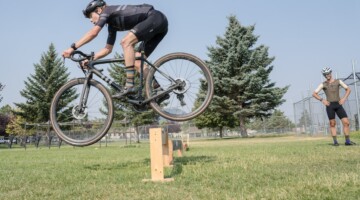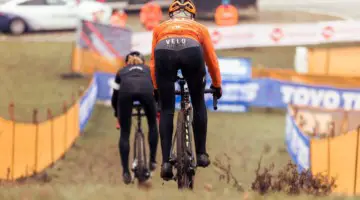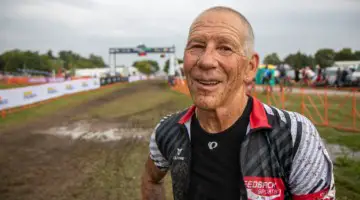I feel my job as a coach is not necessarily to know everything about everything. I have built familiarity with a lot, but I think it’s more important to know when to send a client to an expert in an area such as bike fitting or nutrition.
Nutrition is definitely something I get asked about a lot, and I’ve ended up doing a lot of reading for my own benefit as well. Like most topics, there are a few critical things you can learn quickly and then set about mastering the many details. (See Pareto principle or Tim Ferris’ 80/20 analysis).
Today I want to present the global principles of nutrition and hopefully, you can start your journey from there.
Cycling Nutrition Basics
First, get rid of the word “deserve.” As in “I deserve this food or this amount,” or conversely, “I don’t deserve this amount of food because of X.” That’s a surefire path to disordered eating and body image issues. Trust me on this, it’s not a fun way to live your life.
Does your car deserve gas? Do you fill it up with 93 octane after a long trip? Or only 89 because it was a short trip that day? For athletes, it’s not about eating food, it’s about fueling your body to perform at your maximum. Calories in, calories out; no more, no less. Fuel to ride well and you’ll burn more calories in the end.
One easy way to think about things is “twice as much on the bike, half as much off.” A lot of people ride for four hours with one gel and a water bottle. During that ride you could be burning anywhere from 1,500-4,000 calories. We have all probably had an experience where we bonked at the end of the ride and then got to the coffee shop (or home) and started making a lot of suboptimal fueling choices thanks to in-ride mistakes.

Good nutrition will keep you fueled for all your adventures.. 2016 Lost and Found Gravel Race. © Cyclocross Magazine
Eat more DURING the ride and you won’t be in such a bad place at the end of the ride and can make better choices. Your gut has a hard calorie absorption limit of about 400 calories per hour, but how much you can absorb is a trainable thing to some extent, and almost no one actually consumes anywhere near that limit.
For quality fueling on the bike, here are two simple tricks. The first, via Steve Weller, is to break any bars you are eating in half and open the packaging of anything you plan to eat. That makes it way easier to get food in a hurry and not have to commit to the whole bar when you eat. Or if you pre-make food, make it in small portions so you can shove it in your mouth in bite-sized servings.
The second trick is to “eat when others eat.” When others go for their food, it’s a good reminder for you to follow suit. Always eat during unplanned stops like flat tires or other mechanical issues. That tip comes from Eric Lundgren.

DIY energy bars are a good way to get your in-ride fueling right. photo: Flickr user Martin Thomas
A similar issue is coming home from a ride and not refueling enough, say with only one light meal post-ride. Again, with that approach, you are kicking the can down the road. You can only sustain a caloric deficit for so long before you need to eat. You can only drive a car around with the low fuel light on for so long. Ask me how I know.
Eat what you need after you ride. If you just finished a big ride, that may mean several meals. Refueling properly after rides helps prepare you to do another quality ride the next day and even the day after that. Quality work done consistently over a long period is ultimately what gets results.
How Much Should You Eat?
Globally how much should you eat? A pretty quick way to deal with that is to get the My Fitness Pal app on your phone. It’s easy to use and the default guidelines are pretty close to what you need.
Using the app starts with logging your food. Humans are REALLY BAD at self-reporting what they eat, so writing your food choices down is a good way to figure out what you’re really eating. Don’t make any changes at first, just log for a couple of weeks. From there you can get an idea of how many total calories you’re eating per day and how that matches up with the demands of your training.
You can also tie My Fitness Pal to Strava. My Fitness Pal pulls calories from Strava, not kilojoules (as measured by a power meter) but in my personal experience it’s within 10%. Again, we’re looking for big, easy things to work on, not the minute details. I mainly use My Fitness Pal to make sure I’m eating enough after long weekend rides so I can hit Sunday and Monday fueled up.

Apps such as My Fitness Pal can help you monitor your food intake. Photo: My Fitness Pal
Once you’ve figured out how to replace calories, start thinking about macronutrients. That means the amount of carbohydrates, fats and protein you’re consuming. We’re verging into paid expert territory, but I think the low hanging fruit here is protein. Most endurance athletes are good about consuming enough carbohydrates, and by that I mean they tend to sit down with a box of cereal to meet their gross caloric needs, which ignores the need for protein to repair and build muscle.
The guidelines are to aim to get around 1.2g of protein per kg of body weight per day. Meeting that recommendation requires 20-40g of protein 3-4 times a day, with one dose right before bed. You can go higher—and Masters athletes probably should—but the body’s limit is about 2g of protein per kg of body weight and after that, you’ll just be excreting what you don’t use. Those are easy guidelines to meet (or they should be!) with minimal to no supplementation. This approach will also get you eating a more healthy diet if you’re not already there.

Eating protein with foods such as nuts is an important part of cycling nutrition. photo: Flickr user thedabllst
As an aside to the above, I highly recommend Stacey Sims’ book ROAR for women readers. It specifically addresses the nutritional needs of women during menstruation and menopause. It’s been really eye-opening for listening to her talk about the issues involved. An interview with Keri Hatley of Shred Science Nutrition and conversations with Kristen Arnold spurred a lot of my interest in protein, and I recommend you check them out if you’re interested in learning more.
Nutrition is a field within the field of training for cycling. However, there are some quick and easy things you can do to maximize your fueling for training. Eat a lot on the bike, track what you eat, keep an eye on how much protein you’re consuming and don’t use withholding food as punishment. Pretty simple, huh? If you’re not reaching your goals after that, it’s time to call in an expert for a more in-depth look. Good luck!
For more training advice, see our Training Tuesday archives.


























